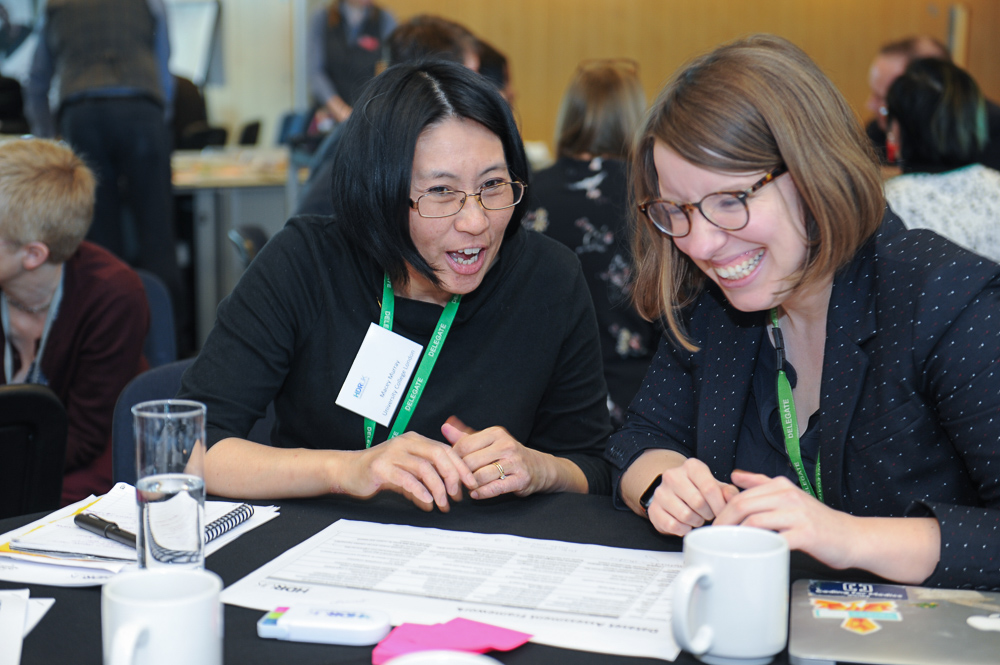Population Research UK - how public contributors helped to shape research at its earliest stages
19 January 2022 | Author: Alice Dowden, Public Engagement and Involvement Officer
HDR UK sought to embed public and patient involvement in the entire journey of the design and dialogue phase of Population Research UK - through its design, to delivery, to impact and dissemination. Here we describe a case study about how public contributors helped shape the design of this new research project at its earliest stages.
HDR UK have led, on behalf of the Economic and Social Research Council (ESRC), the Medical Research Council (MRC) and Wellcome, a design and dialogue programme for Population Research UK. The aim of this design and dialogue phase was to scope how to maximise the use and value of the UK’s rich longitudinal population studies (LPS).
LPS, sometimes referred to as cohort studies, are research studies that collection information from populations and groups of individuals over many years and sometimes an entire lifetime, which can provide an understanding of how biological, social, economic, and environmental factors may interact to impact individuals and the societies in which they live. These types of studies are invaluable resources that researchers can use to address many of societies’ biggest challenges, such as the Covid-19 pandemic, climate change, inequalities, and the ageing population.
How were patients and the public involved?
Public contributors have been involved right from the beginning of this project, helping to shape the public involvement and engagement approach for this scoping activity as well as the direction of PRUK.
In December 2020, we recruited Lucy Dixon and Maisie McKenzie as our two public contributors to the PRUK Partnership Group. The role of the Partnership Group was to act in an advisory capacity and make recommendations to the Programme Board, which is composed of senior representatives of ESRC, MRC and Wellcome Trust. The Partnership Group worked as ‘critical friends’ to the development of PRUK and advised on public and patient involvement (PPI) needs and approaches in the PRUK design and dialogue phase.
What did they tell us?
Our first step was to understand how to involve the public and participants in this initiative. We worked with Lucy and Maisie to understand what was essential for them, as members of the public, to understand about the aims of Population Research UK to give them confidence and help build their trust in the initiative. We also wanted to find out what they saw as the public benefit of PRUK and how we could best incorporate public views in shaping it.
Through their involvement we established that we needed to understand what broader public involvement had taken place within the area of LPS and linkage of different data, to help us better shape the public involvement activities for PRUK. Through a scoping exercise it was found:
- Transparency of the full life cycle of data sharing and linkage is essential to building and maintaining public trust in LPS, and this can be achieved by maximising publicly accessible information on data governance, access and use
- It will be important to recognise the evolving definition of public benefit and continually work with the public to keep them informed
- PRUK should further engage with the general public and cohort members to better understand perceptions of third parties and industry partners accessing LPS and work to understand and breakdown negative perceptions
- PRUK should promote a two-way dialogue at every stage of the data journey and their activities, providing meaningful opportunities for public involvement in decision making in PRUK
The public further shaping our approach
Using these insights, alongside input from other stakeholder perspectives, a draft set of recommendations was developed that explored what PRUK could do.
Working alongside our public contributors as a team, we developed a workshop and resources to clearly explain and communicate the recommendations in a transparent and accessible way to enable the wider public to contribute their ideas as well as raise any potential concerns. This was also adapted into a survey for those who may not be able to attend the workshop. These activities helped us understand the public perspective and highlighted some key areas for consideration in further developing the recommendations for PRUK.
Transparency of data access and research for public benefit
Through the workshop and survey, we were able to further understand public perspectives on the proposed activities of PRUK.
- It was clear that those who got involved recognised the advantages of PRUK working to streamline data access as it could reduce the time and effort taken to carry out research, and therefore lead to important discoveries taking place faster. They highlighted that there is a gap in public knowledge on how researchers currently access data, and further cemented the need for the public to be involved in the approving data access requests.
- Survey respondents and workshop attendees were also positive about the potential for PRUK to increase linkage of LPS but raised concerns around ensuring public involvement in governance procedures, making consent for data use clear, and working to keep all research and data linkage transparent and for the public benefit.
- Realising and communicating the public benefit of any research facilitated by PRUK was recognised as crucial in building and sustaining public trust. Those who got involved agreed this must be achieved by ensuring accountability, avoiding misinformation, and reaching a diverse public audience.
- Both workshop attendees and survey respondents were keen that PRUK should focus strongly on ensuring that data is shared in an ethnical manner, for the public benefit and transparently, to ensure that LPS participants can be assured that their data is used safely and securely.
Both Lucy and Maisie provided input and feedback on the write up of the workshop and survey, ensuring that we communicated the findings in a clear an accessible way, and their perspectives helped to shape the final recommendations for PRUK .
Read the final recommendations for PRUK here
Read the full summary of the public perspectives workshop here
What was the impact?
Through their role in shaping the PPIE approach, our public contributors were instrumental in ensuring that public perspectives were fully taken into account in the development of recommendations for PRUK. The findings from the literature scoping review, workshop and public survey have all supported the team at HDR UK to shape the final specification for what Population Research UK could look like when taken forward, and make sure that public perspectives have been heard, were influential and reflected from the start.
James Pickett, Hub Development Manager at HDR UK, said:
We set out to scope PRUK in a way that ensures the public were involved from the outset. Throughout our activities, from mapping existing involvement and engagement in longitudinal studies to developing public workshops, our public contributors have been crucial and really have helped to shape the project. Their involvement has helped us set this initiative out in a way that can help us build the trust and confidence of patients and the public.



